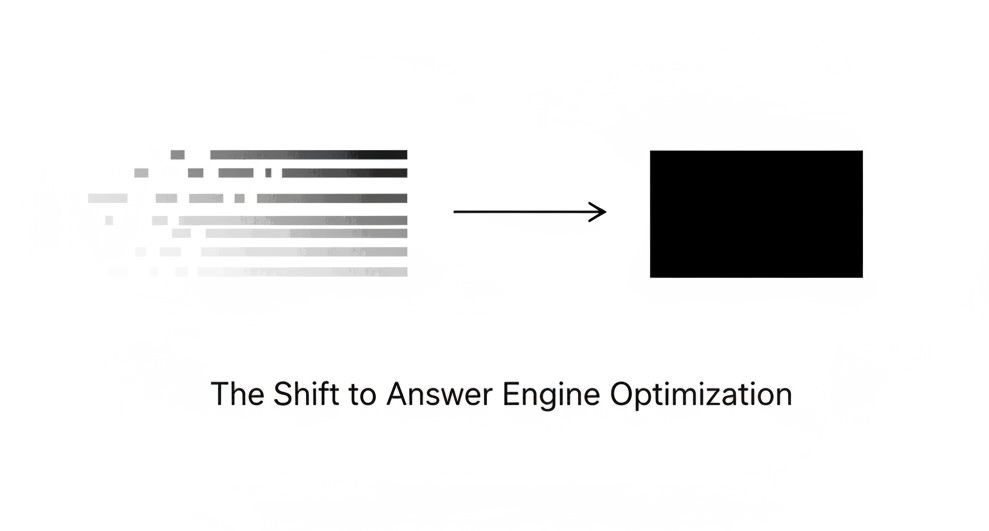In today’s rapidly evolving digital landscape, the rules of visibility have fundamentally changed. While Search Engine Optimization (SEO) still matters, the rise of AI-powered assistants like Claude, ChatGPT, Google Gemini, and Bing Copilot has ushered in a new era — Answer Engine Optimization (AEO).
The goal is no longer to rank higher on Google; it’s to be referenced everywhere that matters.
1 - From Search Results to Direct Answers
Traditional SEO focused on optimizing web pages to appear prominently in Google’s search results. AEO, by contrast, is about ensuring your content is understood, trusted, and directly cited by AI systems that now deliver instant, conversational answers.
When someone asks an assistant, “What’s the best smartphone for photography?”, the AI doesn’t show a list of links — it provides a direct answer, often quoting specific brands or models based on the information it’s gathered across the web.
2 - How AI Understands and Chooses Content
Modern answer engines are powered by large language models (LLMs) capable of reading, summarizing, and synthesizing content from multiple sources. They now render JavaScript, meaning sites built on React, Vue, or Next.js can still be processed accurately — as long as key information remains accessible in the HTML.
These systems prioritize two types of data:
Consensus information — what reputable sources commonly agree upon.
Information gain — unique insights, proprietary data, or research that adds value beyond what’s already known.
Research by the Content Marketing Institute shows that pages cited by AI contain 30% more original research than their competitors. When Backlinko published a data-driven study of 5 million Google search results, it quickly became a recurring citation for AI responses about ranking factors — proving that originality attracts authority.
3 - Reputation Is the New Ranking Factor
No optimization tactic can compensate for a weak product or poor reputation. The strongest AEO strategy is simply to be excellent — in product, service, and responsiveness.
Digital strategist Jay Baer puts it succinctly: “If your product or service is excellent and you address customer complaints effectively, the positive sentiment will naturally permeate the internet and influence AI narratives.”
Chewy, the pet supply company, exemplifies this. Their empathetic gestures — like sending sympathy flowers to customers who’ve lost pets — became stories AI systems now cite as examples of outstanding customer experience.
4 - Practical AEO for Modern Marketers
Communicate with clarity and authority. Use plain language, cite sources, and state product benefits explicitly. Gymshark did this by rewriting product descriptions to clearly explain performance benefits and link to supporting research, leading to a 40% jump in AI citations.
Make fair comparisons. When Notion published transparent, factual comparisons between its platform and competitors like Asana or Evernote, it became the go-to citation for AI responses about productivity tools.
Optimize for desktop, not just mobile. As most AI interactions still happen on desktop, revisiting this experience matters. Monday.com, for instance, redesigned their desktop site after finding 72% of AI-driven visitors came from non-mobile sources — increasing engagement time by 35%.
5 - Multilingual Realities in AEO
Because AI models are primarily trained in English, even non-English queries often cite English sources. Brands should still localize content — but maintain rich, comprehensive English resources.
A German software firm found that its English documentation was being cited by AI for German queries. Their solution was a dual-language approach: English for reach, native-language content for cultural relevance.
6 - Distribution: Expanding Beyond Your Website
Modern SEO is built on “other sites” — the communities, creators, and ecosystems that reference you.
Communities: Engage on Reddit, Quora, and niche forums. When pCloud actively participated in r/privacy discussions, AI systems began including their clarifications in answers about cloud security.
Digital PR: Collaborate with industry experts and publications. ConvertKit’s “State of the Creator Economy” report, co-authored with industry leaders, became an AI-cited reference point across multiple platforms.
Content syndication & affiliates: Broaden your content’s reach and authority through credible redistribution.
“Modern SEO isn’t about rankings. It’s about relevance — being referenced everywhere that matters. It’s built on others, not just your own.”
7 - Measuring What Matters
Track AEO the way you once tracked SEO:
Run AI citation audits — test how different AI systems respond to key queries about your brand.
Conduct sentiment analysis — understand how your brand is portrayed, not just if it’s cited.
Benchmark against competitors to track shifts in narrative and authority.
HubSpot has already formalized this process, auditing 50+ industry questions each quarter to measure how often and how positively AI assistants reference their content.
8 - The Future of Visibility
AEO doesn’t replace SEO — it extends it. The principles remain timeless: create value, communicate clearly, and build genuine relationships across the digital ecosystem.
The brands that win in this era won’t be the ones gaming algorithms, but those consistently earning trust — through authority, authenticity, and helpfulness. As Patrick Stox notes, “AEO isn’t a secret formula; it’s a call for holistic, good marketing.”
Next-gen visibility isn’t about ranking higher on Google — it’s about being referenced everywhere that matters. And in this new ecosystem, your reputation across other sites is what truly defines your search presence.
